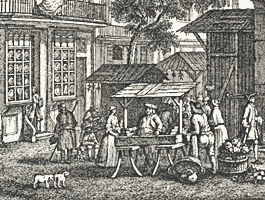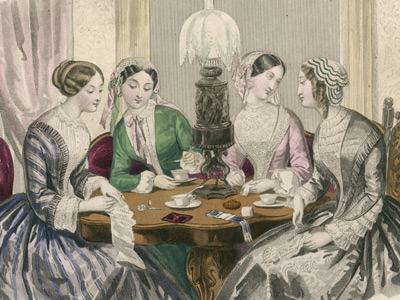China and Europe: 1780-1937
The Revolution Explained
"Industrious" Revolution
Synthesizing much of the gradual story of European development, Jan De Vries has embedded the Industrial Revolution in a larger "industrious revolution," a concept which among other things, helps dissolve a paradox. The grain-buying power of European day wages fell very sharply between about 1430 and 1550, and it didn't return to 1430 levels until 1840 or later, depending on the place.
Forget the National State [VIDEO]
TRANSCRIPT: When we do comparative history, the easiest thing to do is always to take the twentieth-century national state as our unit of analysis. That's how the data is collected. And if you start thinking about political policies, that's how they get made. And yet, for many purposes, the national state is a deceptive unit. And particularly, if one thinks of China in terms of either size or population or internal ecological diversity, China is much more comparable to Europe as a whole, than it is to any given European state. And so part of what I try to do is to bear that in mind, and make not comparisons between say (Europe) and China, but to think of both (Europe) and China as having a range of subunits, and to remember that just as China has its Yangzi delta and also has its Gansu ... Europe has its England and Holland, and also has its Balkans and Ukraine. And that we need to think about regions that have comparable roles within the larger units that they're part of.
This could have occurred because people spent more hours per year working for the market, earning cash to pay for new possessions, as well as for stable amounts of their increasingly expensive bread. People probably had less leisure time, though there are complications here with how one defines "leisure." They certainly spent less time making goods for their own households.

Street market and shops in London, early eighteenth century.
Avery Architectural and Fine Arts Library, Columbia University
They specialized more, and they bought goods made by strangers. They began to buy bread that other people baked, candles that other people made, so on and so forth, and so many of their purchases "saved time," in modern parlance, on domestic chores.
The Chinese story, I'd argue, is surprisingly similar. The rice-buying power of a day's wages mostly fell, though with some interruptions, after about 1100. But nutrition did not seem to have worsened, nor was it inferior to that in Europe during this time. Meanwhile, grain-deflated earnings in textile work and agriculture in the Yangzi delta matched up well against England.

Wealthy Chinese watching a performance in a teahouse.
John Thompson, photographer, mid-nineteenth-century.
Columbia University Libraries
Chinese life expectancies were comparable to England's and thus above those for most of the European continent, until almost 1800. And Chinese birth rates, contrary to mythology, appear to have been no higher than those of Europeans between 1550 and 1850, and while population grew faster, this suggests that Chinese death rates were no higher either.
And for a long time China also kept pace with Europe in nonessential kinds of consumption. Reconstructing some measurements of consumption, China circa 1750 stacks up reasonably well against Europe, and the Yangzi delta region reasonably well against England. This is the case for two non-grain foods we can make reasonably good guesses about: tea and sugar. The Chinese edge in tea consumption is perhaps not surprising. Where does the stuff come from after all? The Chinese parity, or in fact better-than-parity in sugar consumption circa 1750, is quite surprising though, and in cloth—probably the second biggest item of expenditure—we see a similar pattern circa 1750. China as a whole seems comparable to Europe, and the Yangzi delta to England.

Tea became a popular social beverage in Europe.
Mary Evans Picture Library